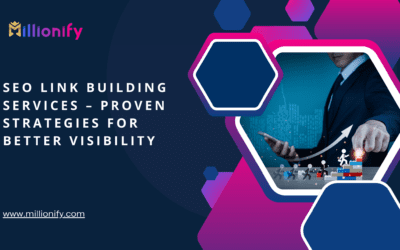If there’s one thing every business owner agrees on today, it’s this: the digital world controls customer decisions. And with over 5.3 billion internet users worldwide (Statista, 2024), companies that don’t adapt are simply handing customers to competitors. That’s why unlocking success with digital marketing is more important than ever.
Digital marketing helps businesses grow faster, reach more people, and build long-term relationships. For example, companies that invest consistently in digital strategies see 2.8x more revenue growth compared to those that don’t (Source: Google Market Insights).
So, let’s walk through the strategies that can help any brand—big or small—win online.

Understanding the Foundations of Digital Marketing
What Digital Marketing Really Means
Digital marketing is more than social posts or ads. It’s a complete system that connects your brand with your target audience through different online channels—search engines, websites, content, social media, email, and more.
Key Components Every Business Must Know
- Website
- Search Engine Optimization
- Content Marketing
- Social Media
- Paid Advertising
- Email Marketing
- Analytics
Each of these is important on its own, but their true power comes when they work together.
Building a Strong Online Presence
Website Optimization for Maximum Visibility
Your website is your digital storefront. It must be fast, easy to navigate, and designed to convert visitors into customers.
User Experience as a Ranking Factor
Search engines reward websites that offer a smooth experience—clear menus, readable fonts, proper spacing, and a clean layout.
Mobile-First and Page Speed Requirements
More than 60% of today’s searches come from mobile devices. If your website loads slower than 3 seconds, most visitors simply leave.
Creating High-Quality Content That Converts
Content Marketing as a Growth Engine
Content builds trust, authority, and visibility. Whether it’s blogs, videos, infographics, or podcasts, you must create value that solves user problems.
Storytelling and Value-Driven Content
Stories connect emotionally. People don’t just follow brands—they follow narratives that resonate.
Using SEO-Optimized Content to Drive Traffic
Use keywords naturally, follow search intent, and organize articles with clear formatting and headings.
Leveraging Social Media for Brand Awareness
Choosing the Right Social Platforms
Different platforms have different audiences:
- Instagram → Visual brands
- LinkedIn → B2B
- Facebook → Community building
- TikTok → Younger audience and trends
Building Authentic Engagement
Avoid robotic posts. Use real stories, behind-the-scenes content, and interactive formats like polls and reels.
Social Proof and Online Trust
Reviews, testimonials, and user-generated content help boost credibility and conversions.
You May Also Like : What Services Do Dogital Marketing Agencies Offer?
Search Engine Optimization: Ranking Where It Matters
On-Page SEO Essentials
Optimize:
- Titles
- Meta descriptions
- URL structure
- Internal links
- Headings
Keyword Research and Intent Strategy
Use keywords based on user intent—are they looking to buy, compare, or learn?
Internal Linking and Structure
Internal linking boosts time-on-page and helps search engines understand your content structure.
Off-Page SEO and Brand Authority
Backlinks and Authority Signals
Links from trusted sites signal authority. Guest posts, PR features, and collaborations help you rank higher.

Paid Advertising for Faster Growth
Benefits of PPC Advertising
Paid ads offer instant visibility, unlike SEO which takes time. Platforms like Google Ads and Meta Ads allow precise targeting.
Retargeting Strategies for Higher Conversions
Retargeting reminds users of your brand after they’ve visited your site—dramatically increasing conversions.
Analytics: Measuring What Truly Matters
Understanding KPIs for Digital Growth
Important metrics include:
- Conversion rate
- Click-through rate
- Bounce rate
- Customer acquisition cost
Conversion Rate Optimization (CRO)
Simple improvements like better visuals or clearer CTAs can double conversions.
Customer Lifetime Value (CLV)
CLV measures how valuable a customer is over time, helping you plan smarter budgets.
Enhancing Customer Experience Through Automation
Email Automation and AI Tools
Automation helps deliver the right message at the right time—welcome emails, abandoned cart reminders, product suggestions.
Personalization for Higher Engagement
Personalized emails perform 6x better than generic ones.
Unlocking Success with Digital Marketing Through Integrated Strategies
Unifying SEO, Content, and Social Media
When these three are aligned, your brand grows faster. Content attracts visitors, SEO drives reach, and social media amplifies your message.
Multi-Channel Marketing Approach
Be everywhere your customers are—email, search, social, video.
Common Mistakes Businesses Make and How to Avoid Them
Poor Budget Planning
Spreading your budget too thin rarely works. Focus on fewer but stronger channels.
Ignoring Analytics and User Behavior
Data tells you what’s working. Use it.
Future Trends in Digital Marketing
AI, Automation, and Predictive Insights
AI helps personalize experiences and predict what customers want next.
Social Commerce and Personalization
Platforms like Instagram and TikTok are becoming shopping hubs.
Conclusion
Unlocking success with digital marketing isn’t about using every tool—it’s about using the right tools with the right strategy. When businesses focus on content, SEO, social media, analytics, and automation together, they unlock opportunities for massive growth. The digital world moves fast, but with the right approach, your business can move faster.
FAQs
1. What is the most important part of digital marketing?
A strong strategy and consistent content creation are the most critical factors.
2. How long does it take to see results?
SEO takes 3–6 months; paid ads offer instant results.
3. Why is content marketing so effective?
It builds authority, trust, and long-term traffic.
4. Do small businesses need digital marketing?
Yes—it’s the most cost-effective way to reach customers today.
5. How much should I spend on digital marketing?
A general rule is 5–10% of revenue for stable growth.



